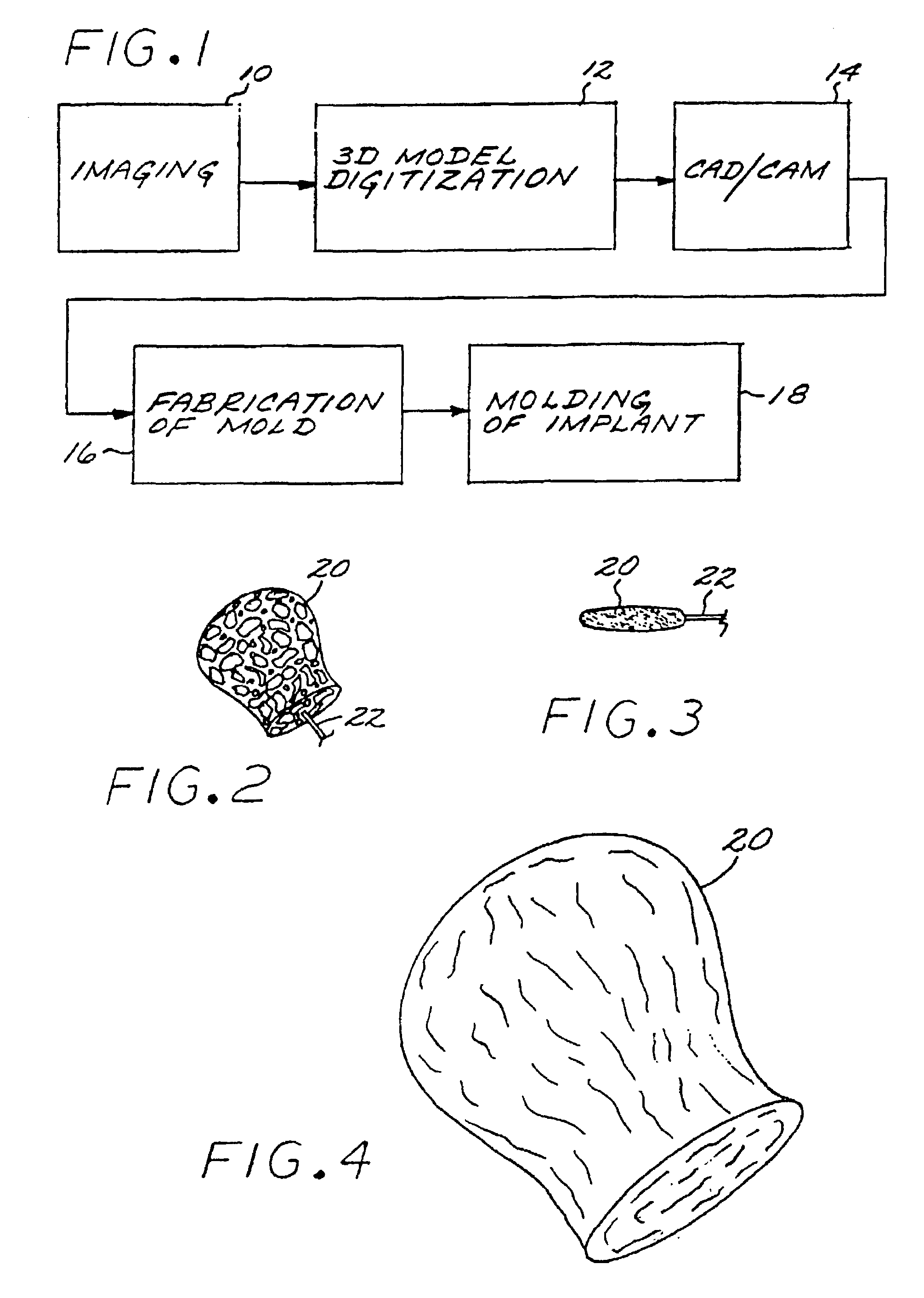Vascular embolization with an expansible implant
a vascular embolization and expansible technology, applied in the field of methods and devices, can solve the problems of balloon rupture during inflation, difficult to retrieve or move after solidifying fluid sets, and difficult visualization, and achieve the effects of effective vascular embolization implants, excellent location control, and reduced risk of vascular rupture, tissue damage, or migration
- Summary
- Abstract
- Description
- Claims
- Application Information
AI Technical Summary
Benefits of technology
Problems solved by technology
Method used
Image
Examples
Embodiment Construction
[0029]The Method of Manufacturing a Vascular Implant. A first aspect of the present invention is a method of manufacturing a vascular implant device. The steps of a preferred embodiment of the manufacturing method are shown as a sequence of descriptive boxes in the flow chart of FIG. 1.
[0030]The first step, shown in box 10 of FIG. 1, is the step of creating an image of a vascular site, such as an aneurysm, in which an embolizing implant is to be installed. This imaging step is performed by scanning the site using any of several conventional imaging techniques, such as computer tomography, magnetic resonance imaging (MRI), magnetic resonance angiography (MRA), or ultrasound.
[0031]The result of the imaging step is a digitized scan data set that is stored in a computer memory, from which the data set is retrieved for operation of the next step: computerized reconstruction of a three-dimensional digitized virtual model of the vascular site (box 12 of FIG. 1). This step of creating a thr...
PUM
| Property | Measurement | Unit |
|---|---|---|
| Pressure | aaaaa | aaaaa |
| Flexibility | aaaaa | aaaaa |
Abstract
Description
Claims
Application Information
 Login to View More
Login to View More - R&D
- Intellectual Property
- Life Sciences
- Materials
- Tech Scout
- Unparalleled Data Quality
- Higher Quality Content
- 60% Fewer Hallucinations
Browse by: Latest US Patents, China's latest patents, Technical Efficacy Thesaurus, Application Domain, Technology Topic, Popular Technical Reports.
© 2025 PatSnap. All rights reserved.Legal|Privacy policy|Modern Slavery Act Transparency Statement|Sitemap|About US| Contact US: help@patsnap.com



